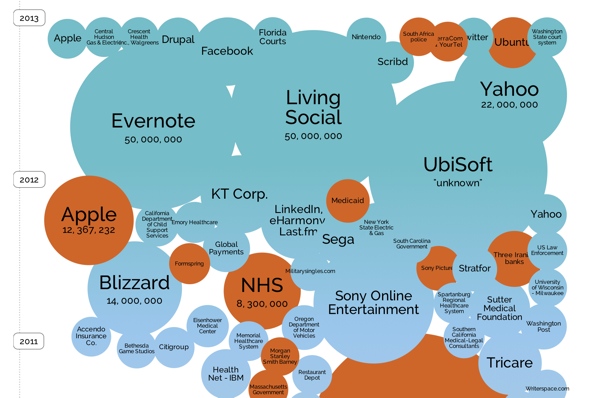It seems like companies these days are collecting more data on us than ever before. Every time you give that car dealership your email or give a store your zip code, you’ve given up a piece of yourself that can be used to uncover even more of your personal data. Your information is worth a lot, given how Facebook and Google make billions per year off it.
To use pretty much any piece of technology these days, you have to have a certain amount of trust in corporate America to do the right thing and safeguard the information it has on you. Of course, most companies do handle data responsibly. But there are bad guys out there – hackers, disgruntled employees and other assorted criminals – who are eager to exploit your data. And sometimes, even corporate computer security just isn’t enough to prevent a data leak.
But a lot of data does leak. To help you get an idea about the magnitude of these leaks, site Information is Beautiful has compiled a stunning (terrifying?) interactive infographic showing 300 of the world’s largest data breaches.

Data leaks over the last two years, as graphed by Information is Beautiful.
The largest data breach, a theft of 130 million credit card numbers from payment processing firm Heartland, looms large on the infographic. Discount retailer TJ Maxx exposed data for 94 million customers; AOL put 112 million accounts at risk in two separate events. Major recent hackings of Sony Online Entertainment (PSN), Ubisoft, Facebook, LinkedIn and eHarmony all rank as well.
Almost every type of company appears on the infographic, which you can sort by year, severity and size of the hack. One thing becomes very clear, very quickly as you look at the graphic: Data leaks are common and widespread. No one is immune, so you may want to consider these 11 simple ways to protect your privacy.
You can play around with the full interactive infographic at Information is Beautiful, though you should note that the site seems to be a little memory-intensive and best viewed on a desktop.

















